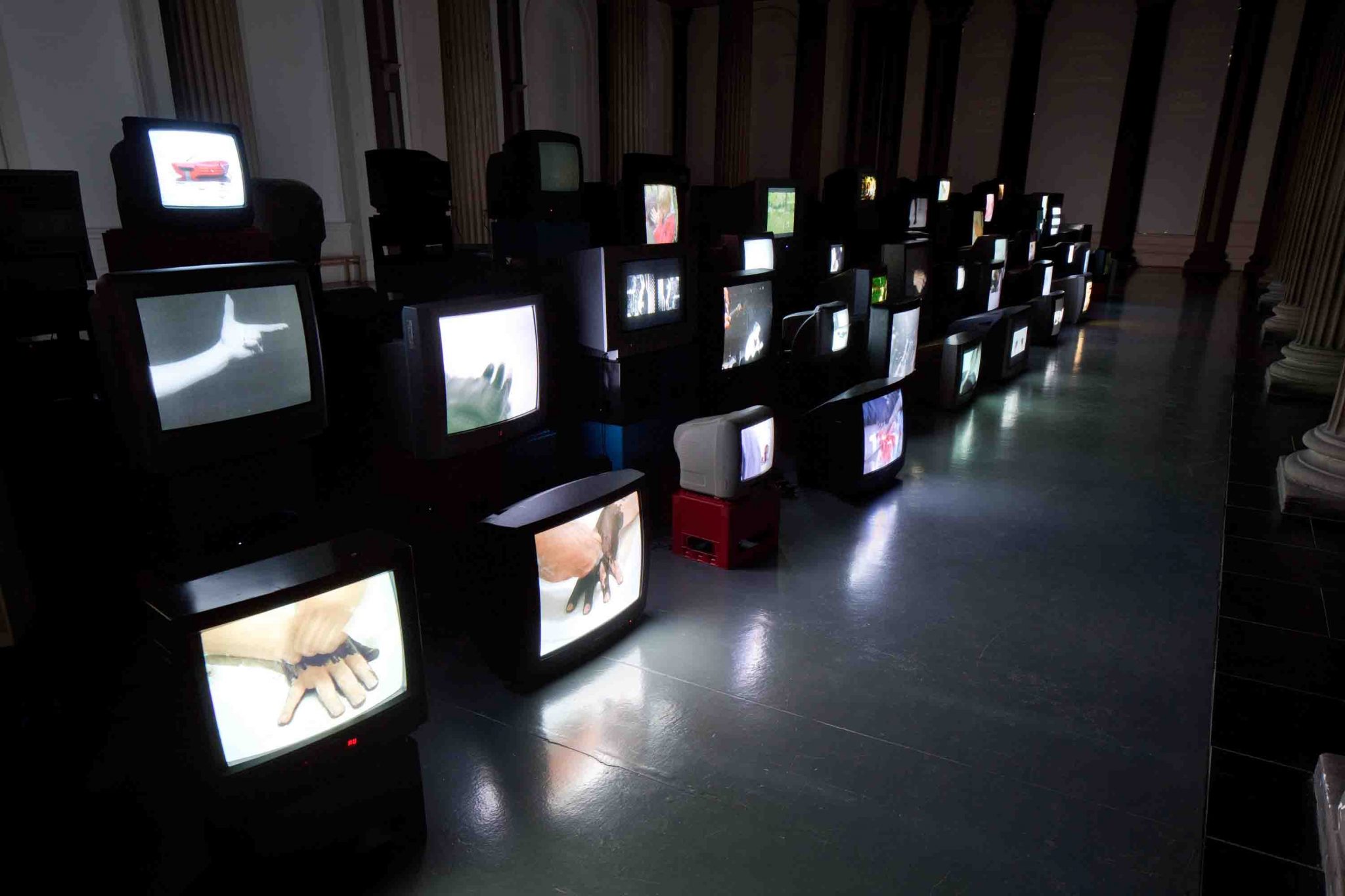I once heard an apocryphal story about a murder in Glasgow back in the early 1990s. The police raided a room on Hill Street. Inside they found piles of VHS tapes and several recording machines and old televisions. And so they watched some films. Fingers fucking clenched fists. Dead flies, a dead head. The Law wrongly, but not unreasonably, thought it had its man. Twenty years later, their ‘suspect’, Douglas Gordon, is now feted internationally, and a presentation of his ‘collected work’ is one of the centrepieces of GENERATION, a series of exhibits throughout Scotland celebrating the nation’s contemporary arts.
Gordon’s current show is only the latest iteration of a compilation piece that is a work in progress as well as being a conceptual index in its own right. In this sense it can be seen as a riff on John Baldessari’s A Painting That Is Its Own Documentation (1966–). The 82 videos on 101 television sets in the Glasgow Museum of Modern Art are now more clustered than those seen in earlier versions, the supporting video-recorders and wiring more hidden. The Hayward Gallery, London, version in 2002 and the Berlin remake of 2012, at the Akademie der Künste, were relatively well illuminated. Here we confront the mountain range of sets in darkness.
A curling finger beckons you in; your eyes adjust to this first screen, showing Scratch Hither (2002), featuring the inviting digit. Then you see a slo-mo Janet Leigh in an office, a quick acknowledgement of what remains Gordon’s best-known work, 24 Hour Psycho (1993). But that flash of recognition is immediately challenged by the realisation that this is on a small screen. Previous viewings of the video were projected onto huge twin screens, and what you are looking at now is not that original conception but a return to the source material as seen on TV. The sound from the sets is deafening, a hellish cacophony of bird-screeching and violin-scraping. You walk around the mound and tick off the Hitchcock quotes; Gordon has gone on record saying he feels ‘more confident to say that I am a good editor rather than a good artist’. Like David Bowie’s Thomas Jerome Newton in a TV showroom, your attention flicks and flitters like the legs on that dying fly. Art referencing abounds; we see human legs descending a staircase, the Empire State Building (New Colour Empire, 2010), some Caligari eyes watching. And then there are the hands. Gordon loves hands. We see them being painted, washed and shaved, gloved, waving as they conduct; we see them clench, unclench and make those aforementioned obscene gestures. They conceal scorpions and end tightly bound with tourniquets.
Gordon wanted this work to have a feel of the old Paddy’s Market in Glasgow, once termed a ‘crime-ridden midden’, the press blurb tells us. Like that fleapit of abandonment, he gives us a pileup of twentieth century imagery both horrific and joyful, a mirror reflection of his schismatic home of Orange walks and Orange Juice.
This article originally appeared in the October 2014 issue
